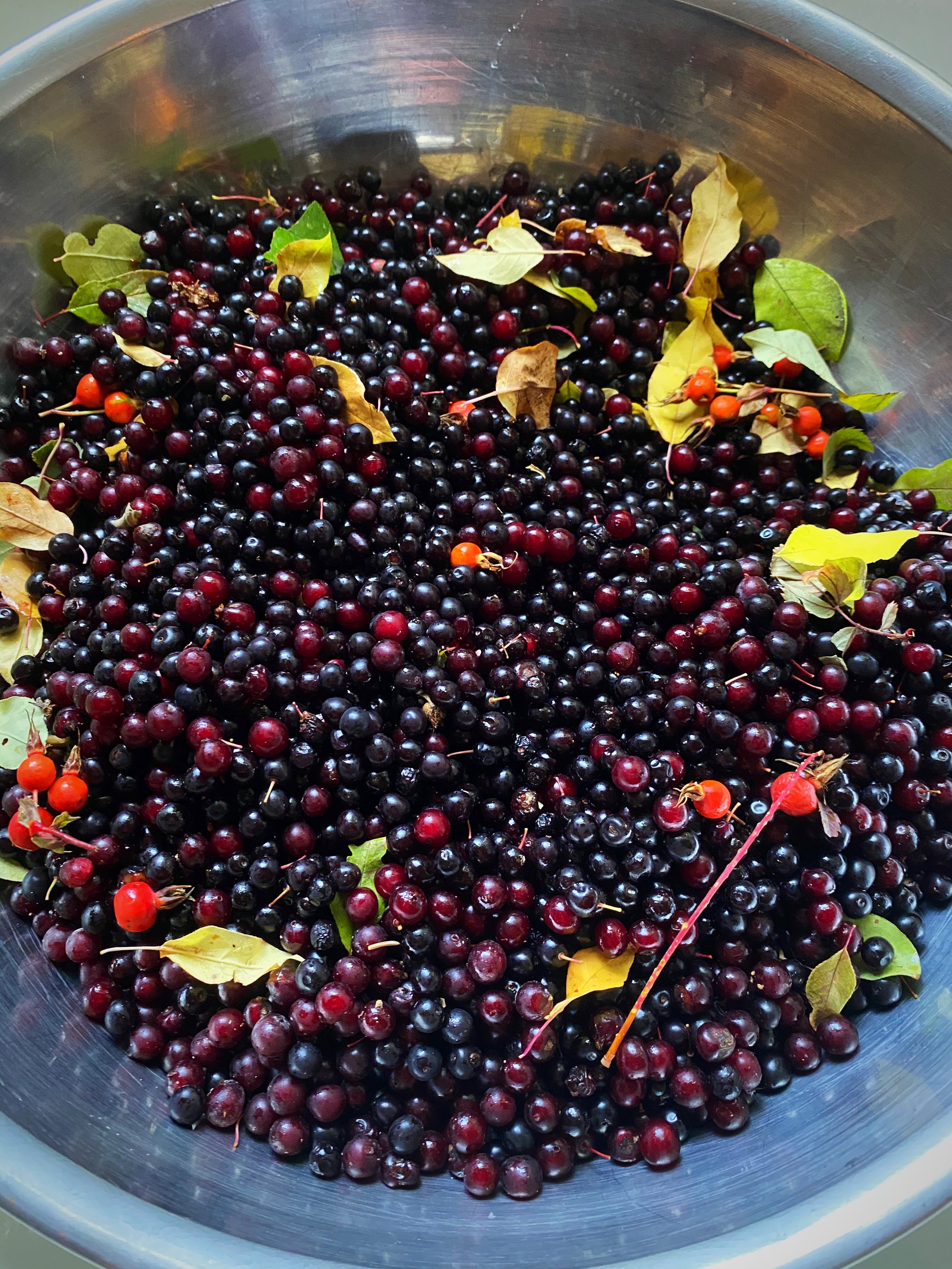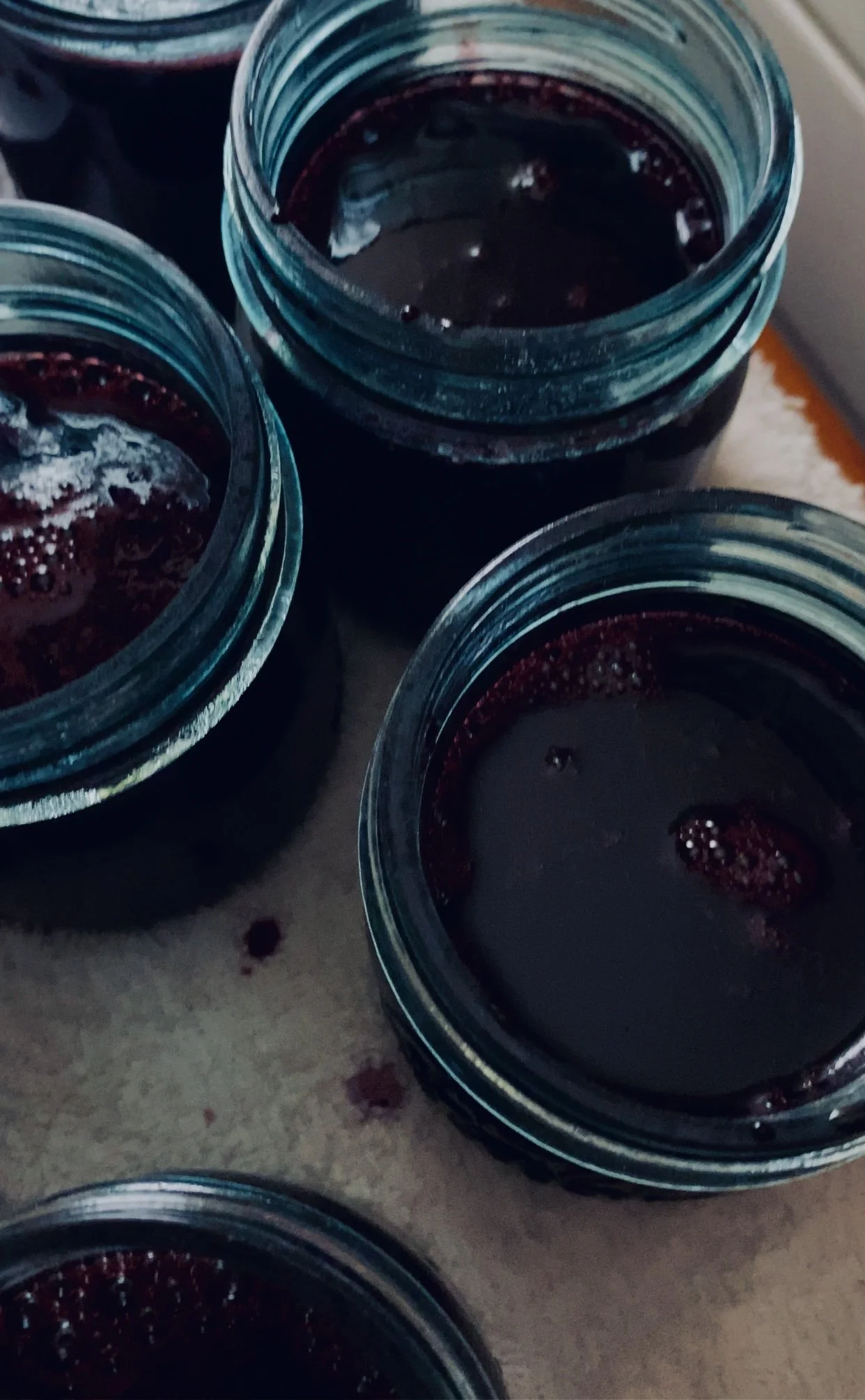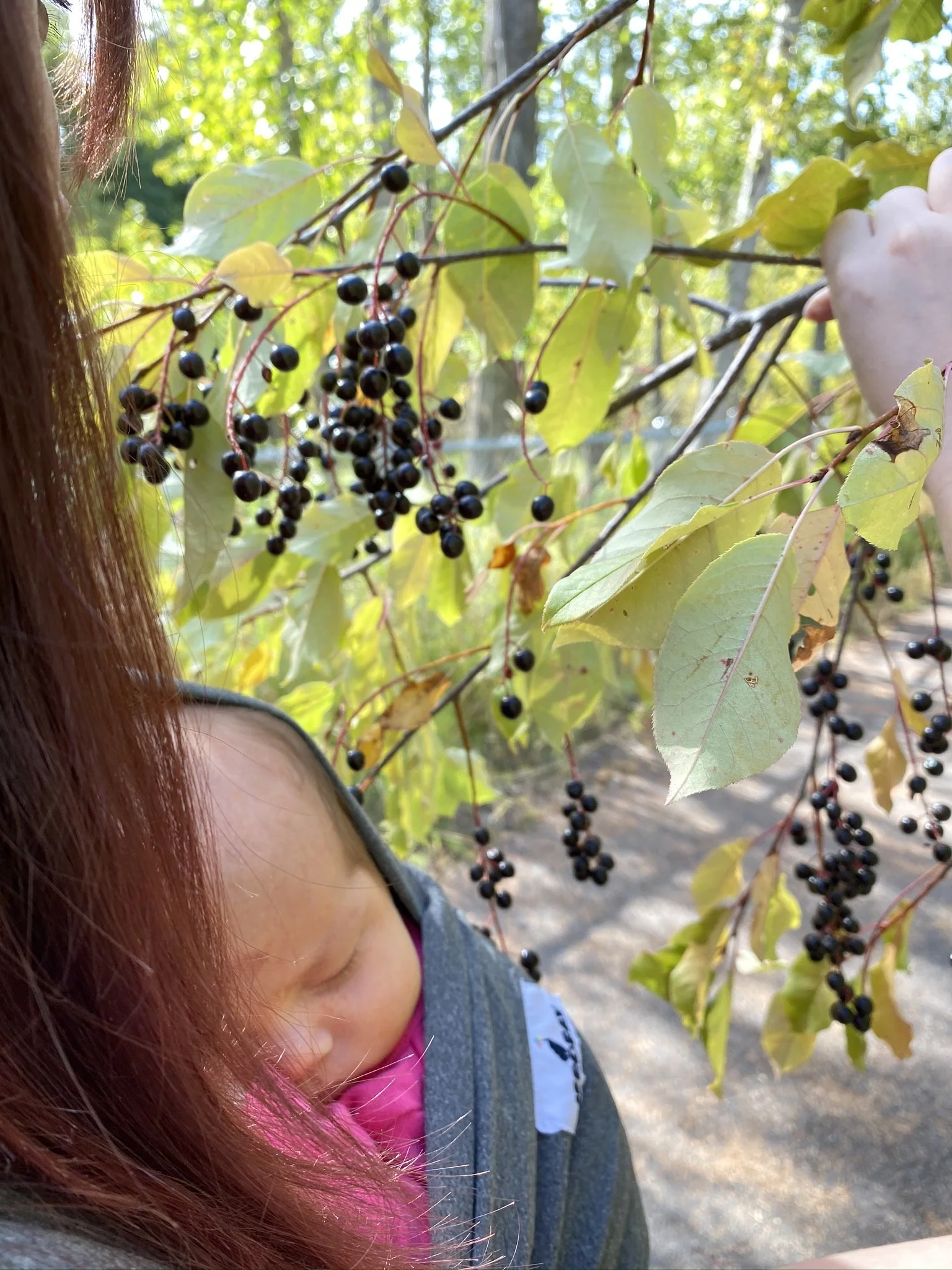Meaning Making through Ordinary Magic
Chokecherry
The technical version spoken with authority, and likely with a white lab coat and a clipboard:
Chokecherries, scientifically known as Prunus virginiana, belong to the Rosaceae family. They are deciduous shrubs or small trees that can grow up to 20 feet tall, with simple, alternate leaves. The leaves are usually oval and have serrated edges. They bear racemes of white flowers in late spring, followed by the development of small, dark red to black cherries. The fruits are not particularly favored for direct consumption due to their astringent, sour taste caused by high tannin levels.
The Spell Casting Version:
Prunus Virginiana. I have known Chokecherry’s formal name for a long time. I have always loved the taxonomical names of things. They sound like little spells on my lips. Prunus virginiana. Prunus is the genus to which this planet belongs (one step above ‘species’ and one below ‘family’. Prunus: Apricots, Almonds, Cherries, Plums and Peaches.
“Prunus,” I whisper out my kitchen window, speaking to the Plum tree that still stands in my backyard and to the one that stood for more years than I could know and was taken down with some ceremony yesterday. I think about the way that I recently made a pie from sour cherries, the recipe from my mom, who ran a local diner on Main Street in the 80s.
Prunus. It brings to mind my hands after too much water and my heart after too much love. Pitted, filled with cyanide, best handled with care.
Virginiana. This spell name takes me to my ancestors. The Scottish part of me settled in Virginia. Like my ancestors, the Chokecherry was first officially noted there. Somehow, when I speak it, I see Virginia, although I’ve never been there. But I don’t really see it; I feel it somehow in its autumnal phase. Did my ancestors prepare Chokecherries the way that I do now?
Carl Linnaeus first named Prunus virginiana in ‘Species Plantarum’ in 1753. Categorizing, organizing, documenting, ordering, structuring, noting. But the Chokecherry didn’t notice, not really, at least I imagine it didn’t. Oh, perhaps there were a few that grew a bit taller with the spell naming system, but it had existed long before Carl Linnaeus and would exist long after.
The Lakota had already called it canpa-hu, the Blackfoot ‘puck-keep’ which is translated to Chokecherry, and I think it suited Prunus virginiana to satisfaction because, obviously, that’s what it’s still called. Chokecherry was one of the primary ingredients in Pemmican long, long before Carl was born. Because of its abundance and its high nutritional value (the berries are said to hold 33.4% protein and 43.3% oil by dry weight, along with its “superfood” antioxidant levels), it was known and was a part of economic, social, and spiritual lives of nearly every indigenous tribe in North America. The trappers documenting their experience with the “superfood” mocked it as a paltry substitute for “our cherries.”
But still, I find myself whispering “Prunus virginiana” as I bend the supple, giving branches low with care. My brain has a strange way of pulling information from itself without my knowing it and when I’m least expecting it. Taxonomies, random bits of classification knowledge. It’s as if there’s a small Carl within me as part of my “inner family.”
But it’s also a spell, this act of reaching, touching, smelling, tasting. What my body knows is that I adore the way the berries taste warmed by the sun, no matter what the trappers thought. An online source cites the astringent, dry taste to cyanide compounds, claiming that they are poisonous to young children and livestock. This explains why many city transplants who arrived during the pandemic migration now pause to watch me and often warn me to be careful. What I know, because it is what my mother knew, is that it is the leaves and stems and possibly the bark that hold the cyanide, but the berries are dry simply because of tannins. The amount of disinformation I must dispel from trail walkers is stunning. I do so kindly, with a smile, but I am firm in what I know. I share the information with them, help them identify the Chokecherry, tell them how I prepare it. I still cannot decide if I do a good or bad thing. Will they know this place the way that I know it? (My heart aches) Will they take the time? (Tears form). Will they understand to leave as much as they take? (Protectiveness overcomes me). Will they know the ways in which the branches like to be touched? The ways that Chokecherry likes to be spoken to? I worry.
It is September, and the berries are black, heavy, sweet (ish), and ripe. The sky is no longer August blue but September blue, and if you look at the sky often enough, you know the difference. Green is fading from the landscape, bits of yellow in its place. The Quaking Aspen leaves take on a new sound despite still appearing green. It’s a hollowness in their susurration (say this spell with me, feel the way it sounds on your lips: susurration). There is a crisp lightness where a heavy lushness used to be. A thinning of their essence.
Ravens call above me; the air is cool, the sun is warm, and I am scratched from head to toe (a sensation I love almost as much as I love the earthy taste of the raw berries); blood the color of berry juice trickles from a deep scrape on my knee. I stand on little hillsides and listen to the world, and I feel the way that all of it is storing itself inside of me. My body’s own ordering system, processing the deep sensory experience, the way my shoulders ache, and my fingers are coated with a vibrant purple, the way that the berries sound falling into my bag and the way that they sound when I miss, and they fall to the Earth, rolling down the hill.
I feel my mom in my bones, the way she loved this the same way that I love it. The way she can no longer do all this reaching and bending. The tragedy in that. The September in that.
I think about the way that my daughter and my daughter’s daughters accompany me some days to pick berries and how it is moving into their bones now, the story of their grandmother, their great-grandmother, their mother. I think about the newness of their lives that they begin to navigate without much of a map except the map of trust and the expanding maps they are making in their little bones.
The ways that Chokecherry is part of that, every year it is a way-post, starting in spring when there are white, beautiful, thickly scented blossoms on long racemes, into early summer holding promises by way of tiny green fruit, falling softly amidst rain and sun into late summer when the fruits begin to ripen, and then September when they transform themselves into lushness, heavy, sweet, and black. My mother told me stories about this cycle, and I told them to my daughter, and together we tell them to Roma and Dahlia. As we pick berries together, babies strapped on milky chests and toddlers between our feet, we are weaving the fabric that saves us from the things that haunt us in the night. And as I navigate the many hauntings, I realize that this is what my mother did, too; we weave the fabric that holds us together when it seems all will come apart.
When I get the berries home, I let them fall from my bag into the big metal bowl that isn’t used for much else. Pour them in. Watch the waterfall of round purple beings flow from bag to bowl. There is so much beauty in this; the leaves and twigs amid the berries take my breath away. I move my hands through them, running clean water over their little round bodies. I tilt my head in admiration and awe. My body is singing and alive, filled with sky and sun and the calls of Ravens. It takes me hours to pick through the berries, sorting them from the leaves and the twigs. The scent as I steam them is home. The way the elixir I craft is imbued with all of it, with magic, with incantations like Prunus virginiana, incantations of togetherness offered by Ravens and Bees. With the wild power of living at the edges of things, with the rooted power of family and history, with the swirling motion of DNA, and with the immeasurable forever of the deep and throaty thrum of life that keeps time for the weaving of the fabric of being.
If you close your eyes when you sip the elixir from my spoon, if you really listen when you do it, you can hear the spell and feel all of that magic moving inside of you, too.


